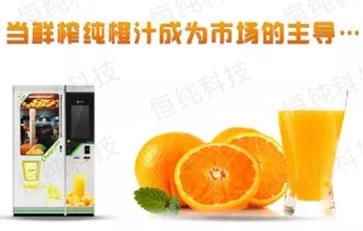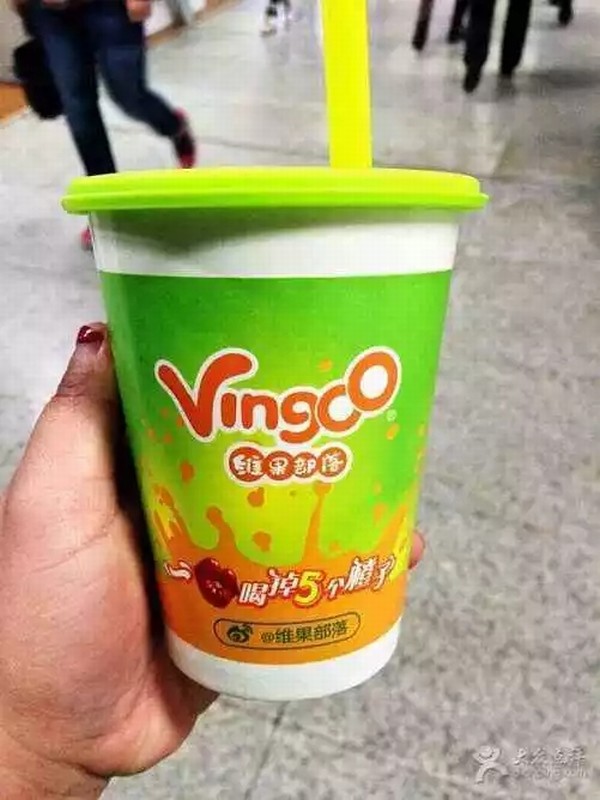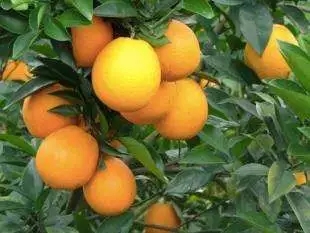
Whenever passing by some major malls in the big cities of China, you wouldn’t miss the recently emerged automated vending machines – orange juice machines. You could see the oranges behind the transparent glass and an ad saying that pay 10 yuan and a freshly-squeezed orange juice is right away.
这段时间,当你走在国内各大城市的商场内,你常常会看见一种新出现的自动贩卖机——橙汁机。透过橙汁机的透明玻璃,你能看到一只只新鲜的橙子摆放在内,机器上的广告写着,你只需要付款10元,便能喝上一杯当场鲜榨的橙汁。
Vingoo Juice, a brand that developed the first automated orange juice vending machine in the world five years ago, now takes about 50 percent of the niche market share in China. The machines are mainly located at airports, train and subway stations, colleges, hospitals, malls and sightseeing spots.
“维果部落”在五年前开创了世界首台橙汁自动贩卖机,目前占据了国内这一新兴市场约一半的份额。这些贩卖机主要位于机场、火车站、地铁站、高校、医院、商场和旅游景区。
Recent years witnessed the fast expansion of vending machine market. Thanks to the O2O initiative, the edgy juice machines could be seen in more than 170 cities in China, with more than 4 million cups of juice being sold monthly. For a consumer, all it takes is 40 seconds to lay his or her hands on the juice cup.
近几年这一类的贩卖机发展势头迅猛。得益于日益成熟的O2O体系,这种时髦的果汁贩卖机目前已经扩展到全国170多个城市,每个月售卖超过400万杯橙汁。对于顾客来说,只需要40秒,一杯鲜榨的橙汁便能到手。
The transaction starts with a mobile phone scan of a QR code displayed on the vending machine. It is followed by mobile payment using tools such as Alipay, ApplePay or WeChat Pay. Then, the machine peels a juicy orange, crushes it to squeeze its juice into a cup, seals it with a wrapper and dispenses it, all in full view of the consumer.
想要购买一杯橙汁,首先顾客要扫描机器上的二维码付款,然后使用支付宝、苹果支付或微信支付等方式完成付款。付款成功后,售卖机就会开始当场对橙子进行去皮,接着把果肉榨成果汁置入杯中,随后对杯子进行封口,交付给顾客,顾客能清楚地看到橙子变成橙汁的全过程。

For the orange farmers , the machine eliminated the intermediary and distribution steps , and directly connects consumers with fresh orange-producing areas. And for the customers, orange juice is rich in natural nutrition, and “visibly” fresh through watching the whole juicing process.
对于橙农来说,这种机器免去了新鲜水果的中间商和分销环节,直接连接起了顾客和鲜橙供应商的桥梁;对于顾客来说,橙汁富含营养,整个可视的榨取流程更是确保了橙汁的新鲜。
It is expected that new automated vending machines will operate around the clock at unmanned kiosks to dispense fresh food. Separate automated vending machines to making ice cream and coconut juice will also be available soon. After drinking the fresh coconut water, consumers can take home freshly extracted coconut pulp.
据悉,不久的将来,顾客还会见到24小时运营的鲜食自动售卖机。此外,自动冰激凌机和椰汁机也将面世。在喝完鲜榨的椰汁后,消费者还能把剩下的椰浆带回家,继续食用。

The History of Orange Juice
橙汁也是“发明”而来
During World War II, American soldiers rejected vitamin C-packed lemon crystals because of their unappetizing taste. Thus the government searched for a food that would fulfill the nutritional needs of the soldiers, have a desirable taste, and prevent diseases such as scurvy in a transportable vitamin C product. The federal government, the Florida department of Citrus, along with a group of scientists desired to develop a superior product to canned orange juice and developed frozen concentrated orange juice.
在二战期间,美国士兵因为对维生素C补充剂——柠檬冰晶的口味感到反感,政府因而开始研发口味更好、营养充足,便于携带的维生素C制品,以帮助士兵预防诸如坏血病等疾病 。当时的联邦政府联合佛罗里达州的柑橘生产部门,以及一群科学家,共同研制了比普通罐装橙汁更有效的维C补充剂 – 浓缩冰冻橙汁。
By 1949, orange juice processing plants in Florida were producing over 10 million gallons of concentrated orange juice. Consumers were captivated with the idea of concentrated canned orange juice as it was affordable, tasty, convenient, and a vitamin-C packed product. The preparation was simple, thaw the juice, add water, and stir. However, by the 1980s, food scientists developed a more fresh-tasting juice known as reconstituted ready to serve juice. Eventually in the 1990s, "not from concentrate" (NFC) orange juice was developed and gave consumers an entirely new perspective of orange juice transforming the product from can to freshness in a carton.
到了 1949年,美国佛州的果橙种植园每年的浓缩橙汁产量超过了1千万加仑。这种浓缩的灌装橙汁价格合理、原汁原味、携带方便、富含大量维生素C,因此受到了消费者的青睐。 消费者只要融化果冰,加入水搅拌,便能喝上鲜美的橙汁了。到了上世纪80年代,食品科学家研发了能进一步还原新鲜橙子风味的的“复原果汁”,到了90年代,“非浓缩果汁”研发成功,橙汁抛却了金属罐,进入纸盒,以全新的“面貌”和新鲜度示人。

VOCABULARY
O2O: 线下电子商务
lay one’s hand on sth.: 得到某样东西
pulp: 浆状物;果肉